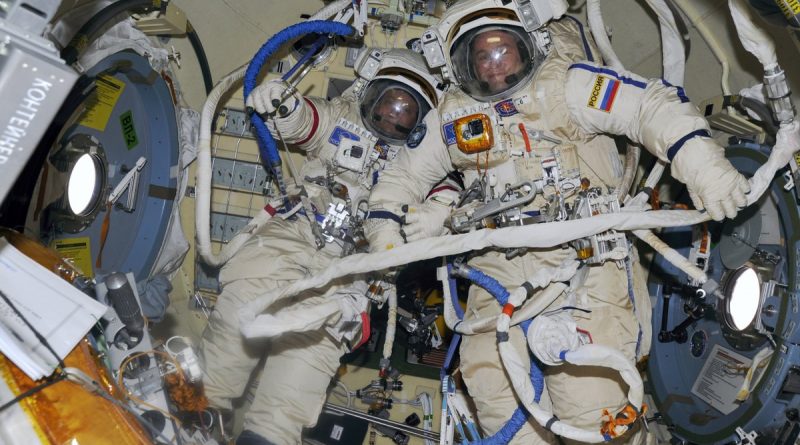Cosmonaut Duo set for busy Spacewalk to Deploy Satellites, Collect Samples & Install Experiments
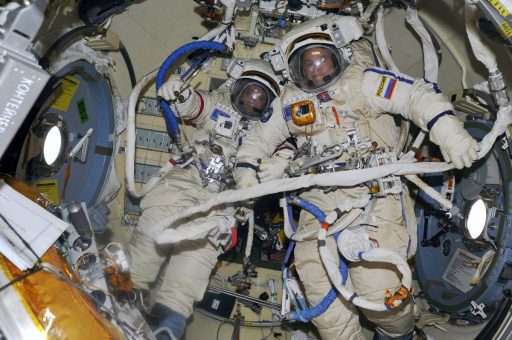
Two Russian Cosmonauts are set to venture outside the International Space Station on Thursday on a planned spacewalk of six hours and five minutes dedicated to a variety of tasks on the exterior of the Russian Segment. Veteran spacewalkers Fyodor Yurchikhin and Sergey Ryazansky will test a new version of Russia’s Orlan space suit, deploy five small satellites, install external experiments on the Russian segment and obtain microbial samples from the outer hull of ISS.
Thursday’s Russian Stage EVA is the seventh spacewalk taking place outside the International Space Station in 2017, coming after six U.S.-based spacewalks completed over the course of the year so far. Russian EVA-43 is the first Russian-Segment spacewalk since February 2016 when Yuri Malenchenko and Sergei Volkov retrieved and installed various external experiments on the Russian Segment.
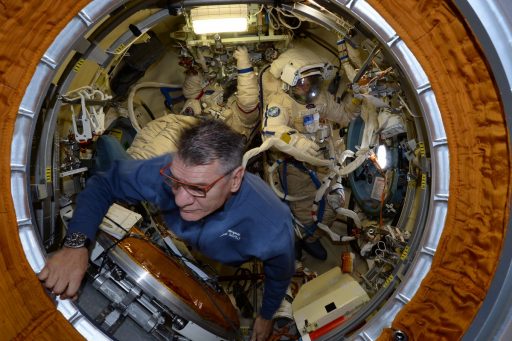
Thursday’s EVA will be carried out by two experienced spacewalkers and the only two Russian crew members of ISS after Roscosmos reduced its permanent Station crew to only two members as a cost-saving measure and to respond to current workload requirements on the Russian Segment.
Fyodor Yurchikhin is a veteran of eight previous spacewalks, having performed his first EVA in 2007 and raking up a total EVA time of 51 hours and 53 minutes, ranking seventh on the all-time record list with prospects of moving into fourth if Thursday’s EVA runs the planned duration. Sergey Ryazansky conducted three previous EVAs for a total of 20 hours and 5 minutes including the highly publicized November 2013 spacewalk that took the Olympic Torch into the vacuum of space before being flown back to Earth to light the Olympic Flame for the 2014 Winter Games held in Sochi.
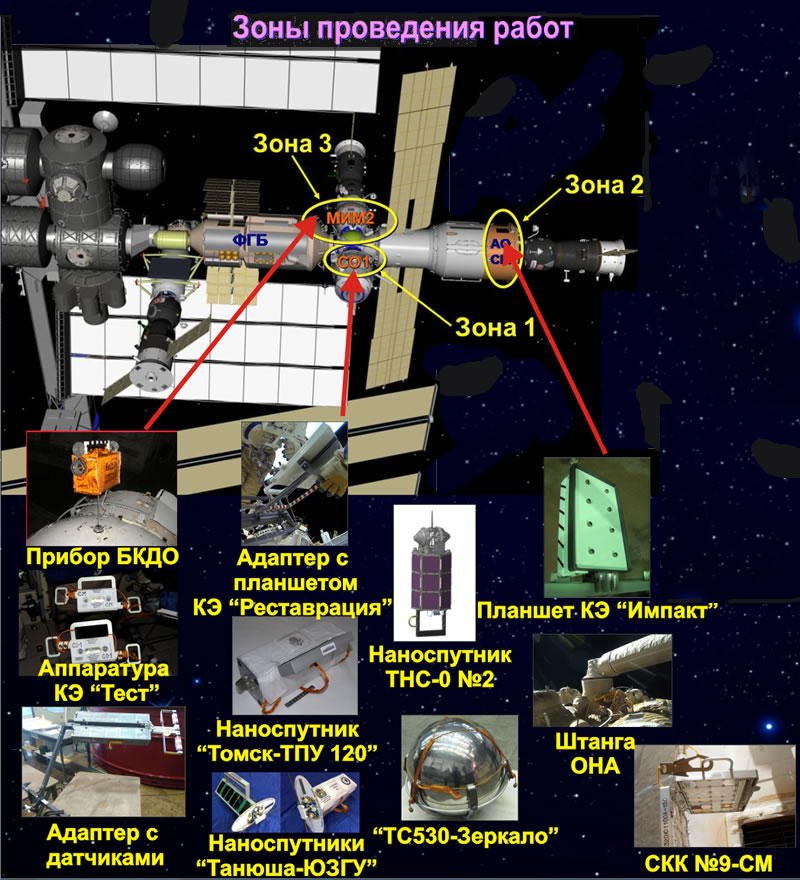
Yurchikhin will be the lead spacewalker on Thursday wearing Orlan-MKS No. 4 with blue stripes while Ryazansky, designated EV-2, will wear Orlan-MK No. 6, also with blue stripes. The duo is scheduled to open the external hatch of the Pirs airlock at 14:41 UTC after several hours of EVA preparations that include suiting up and sealing off the Pirs module and PKhO Transfer Compartment that acts as a backup airlock for Russian spacewalks.
Thursday’s EVA will begin with the release of five small satellites flown up to the Space Station by several recent Progress missions, set for a collective release during the spacewalk. Unlike the U.S. CubeSat deployment infrastructure with sophisticated deployers and the Kibo Robotic Arm, Russia’s method of releasing satellites from ISS is rather low-key and involves a spacewalking crew member literally throwing the small satellites away to ensure a positive separation from ISS with a direction chosen to rule out any re-contact with the satellite on subsequent orbits.
The EVA procedure calls for Sergey Ryazansky egressing the airlock and setting up on the EVA ladder in front of Pirs. His first task will be the collection of photos and video of the “Restavratsiya” (Restoration) Experiment that was performed on the previous Russian EVA by applying a thermal protection foil to a plate which was then left exposed to the space environment to study how the material fares over time. Ryazansky will demate the plates and hand them to Yurchikhin for transfer into ISS and eventual return to the ground.
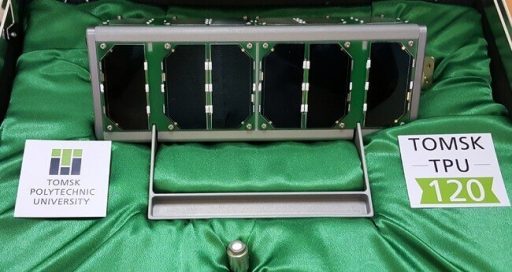
Next will be the release of the five satellites, also to be completed by Ryazansky while Yurchikhin remains in Pirs to hand out the satellites with a total of 40 minutes budgeted for the satellite deployment, to be captured by a GoPro 360 camera.
The five satellites to be released during Thursday’s EVA are:
TOMSK-TPU-120 is a 3U CubeSat from Tomsk Polytechnic University launched in March 2016 to test new satellite materials, featuring an all 3D-printed structure plus a handle to assist with the manual deployment. The 5-Kilogram satellite hosts an amateur radio payload and was first activated in May 2016 while still on board ISS to commemorate the 120th anniversary of Tomsk Polytechnic University.
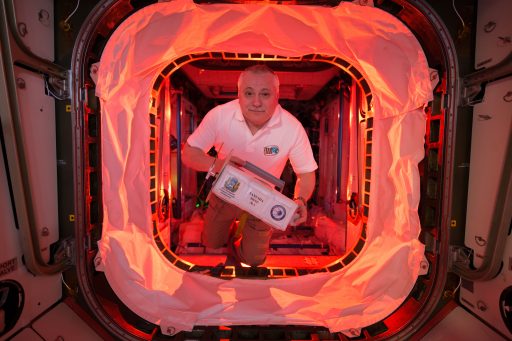
TNS-0 №2 is the second Tekhnologicesky Nanosputnik orbited under a program of Russia’s government-industry complex in cooperation with the Scientific Institute of Space Device Engineering. The first TNS satellite was released from ISS in March 2005 and No.2 will feature a number of upgrades, measuring 20 by 65cm in size and weighing 5.1 Kilograms. Its primary purpose is testing out new small satellite systems for power generation, attitude control and communications using the Globalstar satellite network and a UHF transceiver.
Radioscaf RS-6 and RS-7, also known as Tanyusha SWSU №1 & №2, are two small satellites developed by Southwestern State University, Kursk. Both weigh in at around 4.8 Kilograms and use 3D printed structures, complying with the 3U CubeSat form factor but adding handles and fixed antennas as they do not need to fit into a CubeSat deployer. The two satellites feature communications systems that will be joined in a peer-to-peer type data network that could be used for the self-organization of large satellite constellations with a high degree of autonomy for adding new satellites to the network and removing failed ones. The network will support retransmission and parallel transmission to a ground monitoring station.

RS-6 and 7 also carry SWSU-developed vacuum gauges to measure the density of neutral and charged particles in Earth’s upper atmosphere as a function of altitude. The amateur radio community can engage in the missions by receiving voice greetings from the satellites in four different languages.
Sfera-53 №2 (ТС530-Зеркало) is a follow-on to the first Sfera-53 released from ISS in August 2012. It is a passive spherical satellite measuring 53 centimeters in diameter and weighing 13 Kilograms for use in the calibration of ground-tracking equipment (either optical or radar) and to measure atmospheric density as a function of altitude by tracking the satellite’s orbital decay. Sfera-53 remained in orbit for around three months.
When all satellites are deployed, the EVA clock should be reading PET+63 minutes at which point Yurchikhin will also be out of the airlock and the two spacewalkers will translate aft to the large diameter of the Zvezda Service Module. There, they will collect photos of the SKK No.9 exposure experiment before starting the installation of the “Impakt” experiment package.
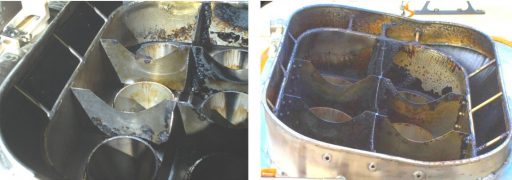
Impakt, to be installed on Plane I of Zvezda, will expose a number of material and coating samples to the space environment to study how different materials degrade in this challenging environment while also being exposed to exhaust from the Space Station’s thrusters, aiming to examine the scope of contamination and corrosion caused by thruster exhaust and propellant residue.
The two spacewalkers will put in place a hand rail and retrieve their GoPro camera before departing Zvezda and moving inboard – going through the standard procedure of wiping down their gloves and suits before throwing the towels overboard to remove potentially harmful contamination due to thruster residue and unburnt propellants accumulating around the aft section of Zvezda. Both EV crew members will stop by the airlock to retrieve equipment for the second half of the EVA before moving up to the Poisk module, installing a hand rails between MRM-2 and the Service Module along their way.
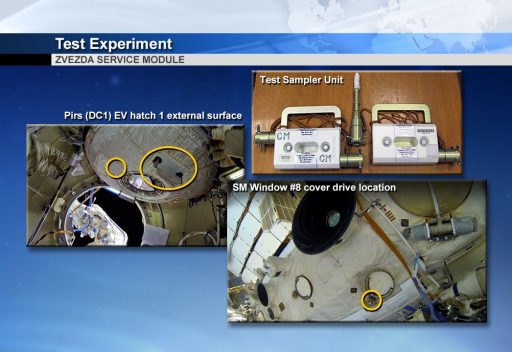
At Poisk, the crew members will get stated with the “Test” Experiment involving a series of samplers to collect surface samples from the outer protection layer of ISS and the windows. The Test Experiment aims to study how different materials behave in the challenging space environment over a long period of time characterized by harsh thermal variations, high doses of radiation and atomic oxygen causing corrosion. Test also looks at the distribution of thruster residue and potential microbial activity on the outside of the space station which has proven to be an interesting area of research based on the previous ten Test samples that have been returned so far.
The Test Samplers consist of pairs of collection devices for the acquisition of swab samples and containers to protect the samplers. Yurchikhin and Ryazansky will take samples from the BL-1 and 2 hatch areas on Poisk and also collect photos of another SKK experiment (No. 3) and install an Expose experiment unit.
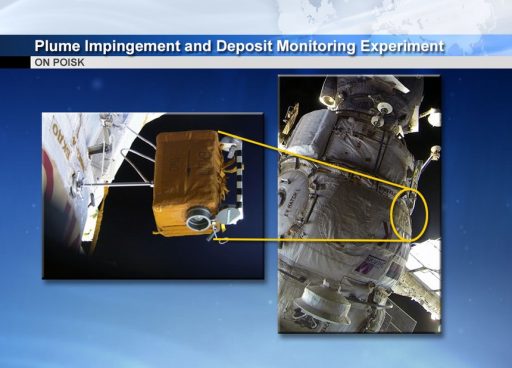
Also at Poisk, the crew will change the positioning of the БКДО Plume Impingement and Deposit Monitoring Unit to view a different sector in its ongoing study of of the plumes created by the thrusters of visiting vehicles and the Space Station itself to learn more about the impingement characteristics of the thruster plumes and processes causing the deposition of combustion products on the external hull of the space station.
Yurchikhin and Ryazansky will install a sensor unit on the BL-2 hatch of Poisk and put in place hand rails between ports 6016 and 1505 before moving back down to the Pirs module where they will collect another pair of test samples and put in place exposure devices. Finally, the spacewalkers will go through a tool inventory and move back into the Pirs module to end the EVA in orderly fashion with repressurization.
The entire EVA will be used as a technology demonstration of the new Orlan-MKS space suit that offers greater capabilities and is geared to providing greater safety and comfort to spacewalking crew members.
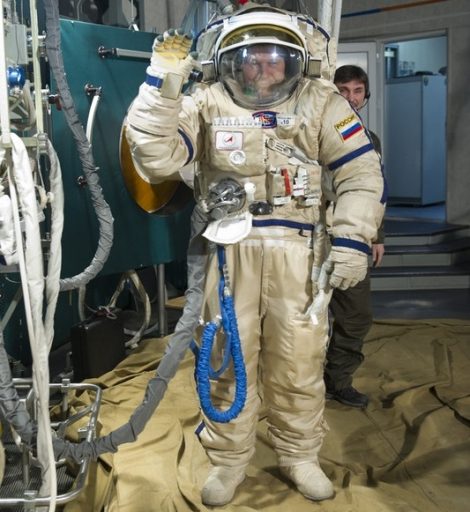
Orlan-MKS has been designed to be more robust than its predecessor while being much easier to use and operate, cutting time from the typical preparations flow for each spacewalk carried out on ISS. The suit has been built for up to 20 uses over a service life of six to seven years, capable of supporting extended spacewalks of up to nine hours. Changes to the older suits include the introduction of an automated thermal control system, a suit management computer that controls the temperature & monitors the suit’s life support functions, and a new, more durable material in the suit’s protective outer layers.
The more robust pressurization layer has an internal capability of withstanding failure, allowing a backup layer to be eliminated which makes the suit lighter and more flexible.
Fyodor Yurchikhin will evaluate the performance of Orlan-MKS for its first in-space test that follows extensive testing performed on the ground over the last five years.

